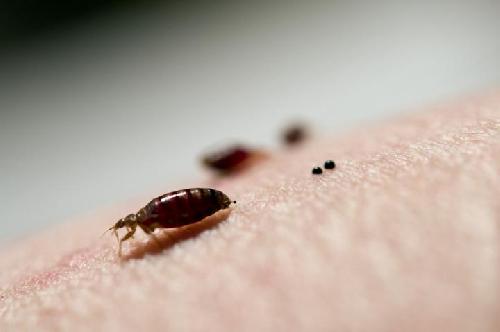One of the most of the most widely used commercial chemicals to kill bedbugs are not effective because the pesky insects have built up a tolerance to them, according to a team of researchers from Virginia Tech and New Mexico State University.
Millions of dollars have been spent on insecticides to kill the bugs that have wreaked havoc on everything from hotels in New York City to homes in Los Angeles. But this is the first study to show that overuse of certain insecticides has led to an increased resistance to the compounds, making them much less effective than advertised.
"While we all want a powerful tool to fight bed bug infestations, what we are using as a chemical intervention is not working as effectively it was designed and, in turn, people are spending a lot of money on products that aren't working," said Troy Anderson, an assistant professor of entomology in the Virginia Tech College of Agriculture and Life Sciences.
 It turns out, the insecticides used to kill bedbugs don't even scratch the surface, a study by Virginia Tech and New Mexico State University found. Credit: Virginia Tech
It turns out, the insecticides used to kill bedbugs don't even scratch the surface, a study by Virginia Tech and New Mexico State University found. Credit: Virginia Tech
Anderson and Alvaro Romero, an assistant professor of entomology at New Mexico State University, published their findings in the Journal of Medical Entomology on Thursday.
The two examined the class of insecticides called neonicotinoids, or neonics, which is often paired with pyrethroids in commercial applications to treat bedbugs.
"Companies need to be vigilant for hints of declining performance of products that contain neonicotinoids," Romero said. "For example, bedbugs persisting on previously treated surfaces might be an indication of resistance."
The researchers conducted their study by comparing bedbugs from homes in Cincinnati and Michigan that had been exposed to neonics with a colony that a researcher has kept isolated since before the insecticide was used. For the last 30 years, the colony has been in an isolated lab run by Harold Harlan with the Armed Forced Pest Management Board.
They also examined a pyrethroid-resistant population from New Jersey that had not been exposed to neonics since they were collected in 2008.
The bedbugs from Harlan's lab that never have been exposed to neonics died when they were exposed to a very small amount of the insecticide. The New Jersey bedbugs fared slightly better, showing moderate resistance to four different types of neonics.
But the bedbugs from Michigan and Cincinnati, which were collected after combinations of insecticides were introduced to the U.S., had much higher levels of resistance to neonics.
It only took 0.3 nanograms of a substance called acetamiprid to kill 50 percent of the nonresistant bedbugs from Harlan's lab -- but it took more than 10,000 nanograms to kill 50 percent of the Michigan and Cincinnati bedbugs.
Just 2.3 nanograms of another substance called imidacloprid was enough to kill 50 percent of Harlan's bedbugs, but it took 1,064 nanograms to kill the Michigan bedbugs and 365 nanograms to kill the Cincinnati bedbugs.
Compared with the Harlan control group, the Michigan bedbugs were 462 times more resistant to imidacloprid, 198 times more resistant to dinotefuran, 546 times more resistant to thiamethoxam, and 33,333 times more resistant to acetamiprid.
The Cincinnati bedbugs were 163 times more resistant to imidacloprid, 226 times more resistant to thiamethoxam, 358 times more resistant to dinotefuran, and 33,333 times more resistant to acetamiprid.
The researchers believe that the detection of neonicotinoid resistance in the New Jersey bedbugs, which were collected before the widespread use of neonics, could be due to pre-existing resistance mechanisms.
When exposed to insecticides, bedbugs produce "detoxifying enzymes" to counter them, and the researchers found that the levels of detoxifying enzymes in the New Jersey bedbugs were higher than those of the susceptible Harlan population.
"Unfortunately, the insecticides we were hoping would help solve some of our bed bug problems are no longer as effective as they used to be, so we need to reevaluate some of our strategies for fighting them," said Anderson, who is also a researcher at the Fralin Life Science Institute.
"If resistance is detected, products with different modes of action need to be considered, along with the use of non-chemical methods," said Romero.
source: Virginia Tech